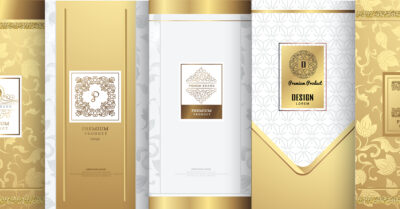 In marketing, we are taught to remember and revere the 4 Ps of the marketing mix, product, place, price, and promotion. Of course, packaging also plays a crucial role here. With that in mind, consider all of the print material that brands produce. Almost everything they print is imbued with their brand colors. But what about special effects? Here are some helpful tips for printing special effects.
In marketing, we are taught to remember and revere the 4 Ps of the marketing mix, product, place, price, and promotion. Of course, packaging also plays a crucial role here. With that in mind, consider all of the print material that brands produce. Almost everything they print is imbued with their brand colors. But what about special effects? Here are some helpful tips for printing special effects.
What Are Special Effects?
A special effects finish allows you to enhance your packaging. To stand out. To grab attention. And to leave a lasting impression on customers and clients in a way they don’t often see these days. Everybody gets the standard packaging. That’s fine. But there is more that can be done.
So, it’s a great way to make your brand unique and can help you stand out in today’s saturated market.
1. Spot UV Gloss Highlights
Some of the most advantageous special effects to use are Spot UV Gloss Highlights. These are especially useful when wanting to add some pizzazz to letters on a package. Or your logo. Or to a neat little design on the package.
UV gloss highlights are a type of special effects varnish, which you apply to specific areas of the print surface. It makes the spots more dazzling by making them catch the light. There’s a whole suite of options available; you can use spot UV matte or glitter.
2. Embossing
Embossing has been around for a little while in the packaging industry. But that doesn’t mean it still can’t leave a great impression and bring ROI to your company. There have even been studies on embossing. It’s been found that customers instinctively reach out and touch embossed packages more than standard packages. That makes sense.
If you want to stand out, you need to harness the power of embossing. Brands and businesses who emboss their printed content, especially their written communications and business cards, make a strong impression. Embossing doesn’t just make your brand stand out; it makes it look professional, even formidable.
The type of special effects you should use depends mainly on the brand image you’ve cultivated. For example, if your brand is aimed at young teenagers between low to medium income levels, you might not want to emboss your materials. On the other hand, if you are marketing your brand towards the well-heeled and the middle-aged, a little embossing can go a long way is it tends to impress this demographic.
3. Foil Stamping
Foil stamping is another special effect that has been around for some time. But the technique continues to improve. There are many variations, costs, and more. It remains a great way to step into the special effects arena.
Foil stamping can give your content a unique look. And help you improve the visual quality of your print materials. So, it works by applying a heated die stamp and adhering mylar-backed materials to paper.
So, you can use it to apply stamped graphics or lettering. The foil stamping effect will make your lettering or graphics appear shiny, crips, and professional. People will want to reach out and feel it. They will notice it amongst the standard packages.
Final Thoughts
Special effects on packaging can make your brand stand out. It’s something tangible that customers (and anyone that comes in contact with the packages) can experience. It’s memorable. One area of concern is the associated cost. Another is about brand perception.
So, an excellent way to approach special effects packaging is to test them first. Try a small run test and see what the reaction is with a small number of users. Most consumers are undoubtedly willing to understand that companies like to test new things. There is little downside in almost every instance. But the possibility is there for high upside.
